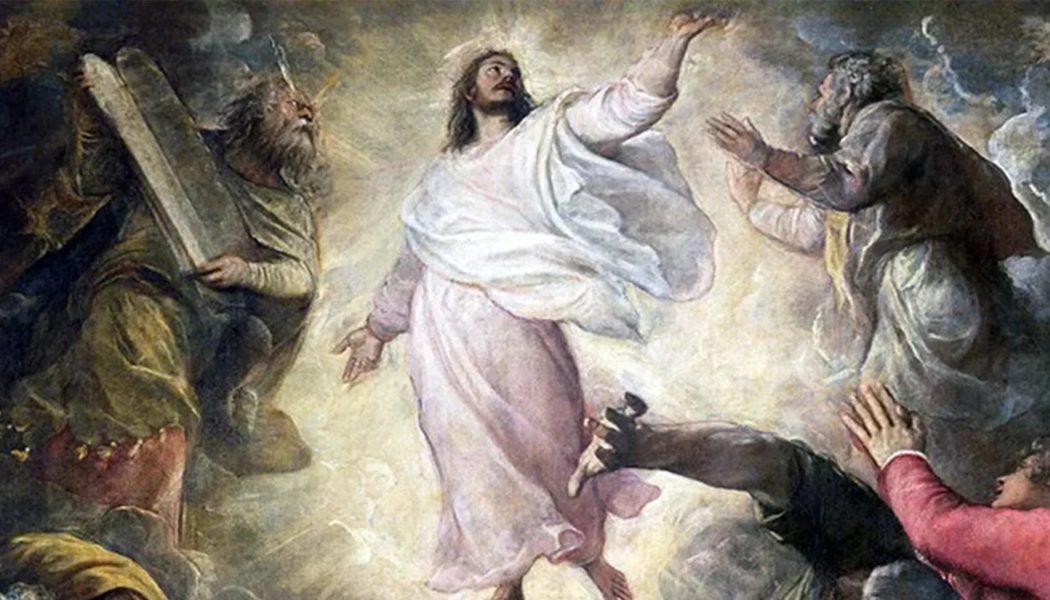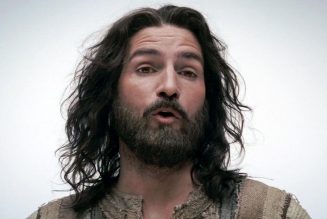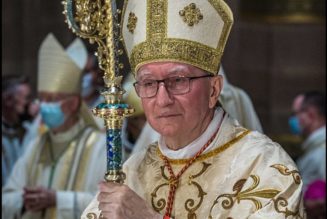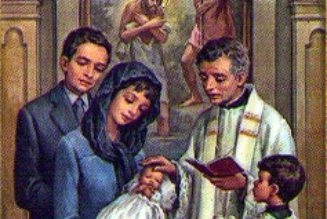
This Sunday, the Second Sunday of Lent Year A, the Church presents the Transfiguration of Jesus on Mount Tabor.
It’s a very strange story with a very clear message, and the message is nothing less than the purpose and goal of our lives.
The transfiguration comes at a pivotal point in Matthew’s Gospel.
Just before this, Jesus has revealed increasingly hard-to-accept facts about his mission. Not only does he say he will be killed, but he says that his disciples will each have to “take up his cross and follow.” The undeniable implication is that he will be crucified and they will too.
That’s a lot to stomach, and the apostles only barely stomach it. Then “Jesus took Peter, James and John his brother and led them up a high mountain by themselves.”
On the mountain he was “transfigured” before them. “His face shown like the sun” and “his clothes became white as light.” Then Moses and Elijah appeared, conversing with Jesus.
You can imagine the apostles talking about it later. “Wait, did you see what I saw?” Peter remembered one novelistic detail, reported here as it is in the Gospel that Peter’s secretary Mark wrote: Peter offers to build tents for the three figures.
Peter, James and John also couldn’t forget the voice saying, “This is my beloved Son with whom I am well pleased, listen to him.” The Gospel says they all heard it, and fell prostrate in fear, only to be taken in hand by Jesus after the vision was gone as he said, “Rise and do not be afraid.”
The Old Testament background makes the implications of this event far-reaching.
At this stage in the story of Jesus, the apostles heard good news and bad news. Jesus told them the bad news already: He will suffer and die, and so will they. The good news is that there is a reality that makes this not only bearable but desirable: Jesus is God incarnate, the king of the universe, the pinnacle of salvation history, ready to spread his kingdom.
The Apostles would know exactly what Jesus’s appearing this way, in this company, means. In the Book of Daniel, which was enormously popular in Jesus’s time, Daniel prophesies that “the wise shall shine brightly like the splendor of the firmament, and those who lead the many to justice shall be like the stars forever.” And here they see Moses and Elijah, the two prophets who had encounters with God, standing before them on Mount Tabor, reflecting the glow of Jesus, who is shining like a star.
It would be like an American seeing Washington and Lincoln appearing today in the glow of a resurrected Jesus — only that would be less significant. These two were far greater. Moses was the man who led Israel on an exodus from slavery and gave them the law of life. Elijah repeated the exodus in miniature on Mount Carmel when he defeated the priests of Baal. Moses was the man who led everyone to the promised land. Elijah disappeared into a new, heavenly promised land in a chariot of fire. Moses assembled and blessed the Twelve Tribes of Israel. Elijah was expected to restore the tribes of Israel after they scattered.
And here they were, standing in the glow of Jesus of Nazareth, a new theophany with Jesus in the place of God, because he is God. This gives a whole new significance to “take up his cross and follow.” The Transfiguration changes the sacrifice Jesus has described from being a brutal end into a glorious exodus. And he changes the apostles from lambs being led to the slaughter into the leaders of a new Israel.
Peter and Paul knew exactly what this means.
In the Second Letter of Peter, the leader of the Church wants to encourage Christians to keep waiting for the Lord, assuring them that he will return for his final triumph even if it takes millennia — for “with the Lord a day is like a thousand years, and a thousand years are like a day.”
How is he so sure? Because of the transfiguration. “We did not follow cleverly devised myths … but we were eyewitnesses of his majesty. … We ourselves heard his voice come from heaven while we were with him on the holy mountain.”
St. Paul had his own encounter with Jesus Christ shining with a blinding light and echoing voice, with the same effect. “Bear your share of hardship for the gospel,” he tells Timothy in Sunday’s Second Reading — not by his own strength but “with the strength that comes from God … now made manifest through the appearance of our savior Christ Jesus.”
St. Peter and St. Paul went to their deaths for Jesus because they experienced his transfigured appearance. We are meant to have the same experience, with the same result. Seeing Jesus pouring forth light made them certain that he was worth giving everything they owned, every day they were granted, all their honor and identity, and in the end the sacrifice of their life. Not for themselves. Seeing Jesus transfigured made them realize they were meant to launch the restoration of the covenant promises of God in the Church.
We should take the hint: God wants us to embrace Jesus this Lent in order to join in the restoration.
In the First Reading, “Go forth,” God tells Abram, “from your father’s house to a land I will show you. I will make of you a great nation, and I will bless you. … All the communities of the earth shall find blessing in you.”
God is keeping that promise now in the Church, which brings the light of Christ and the blessings of his sacraments to the world. Lent is just a step in the process.
The Church gives us the Gospel of the transfiguration to tell us that what we do in Lent is about more than just us. It is the preparatory phase of a campaign to continue the work of the Old Testament prophets and patriarchs, to win the world back for the God it rejected.








![The media are scapegoating Catholics for the Club Q shooting in Colorado Springs [WSJ paywall]…](https://salvationprosperity.net/wp-content/uploads/2022/12/the-media-are-scapegoating-catholics-for-the-club-q-shooting-in-colorado-springs-wsj-paywall-327x219.jpg)
